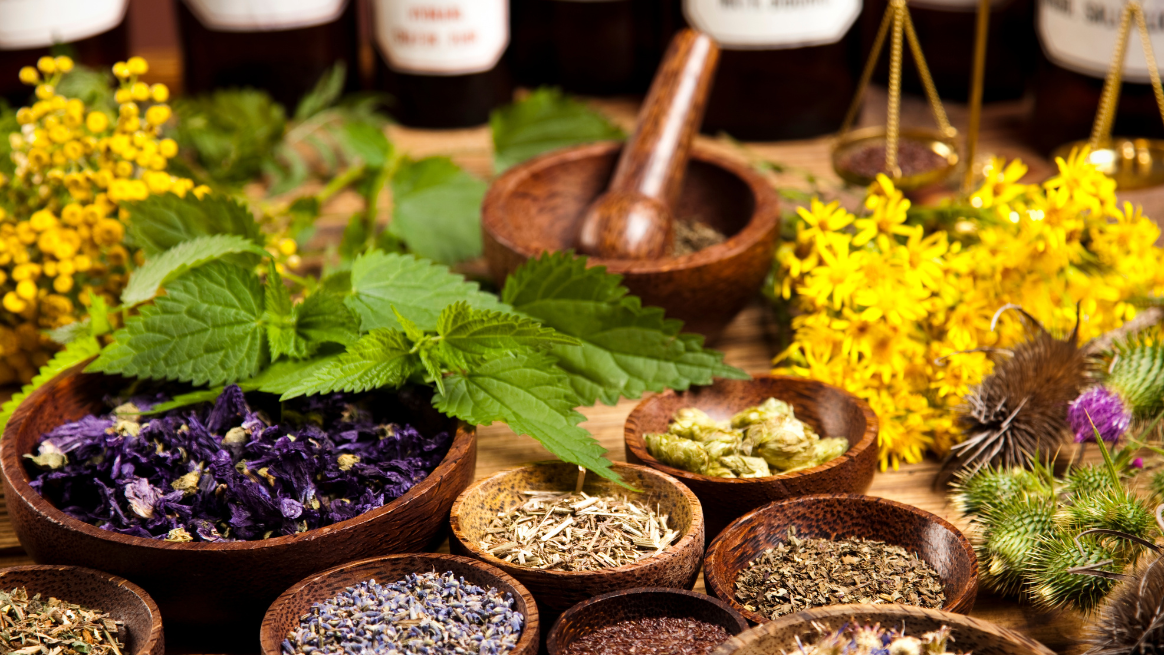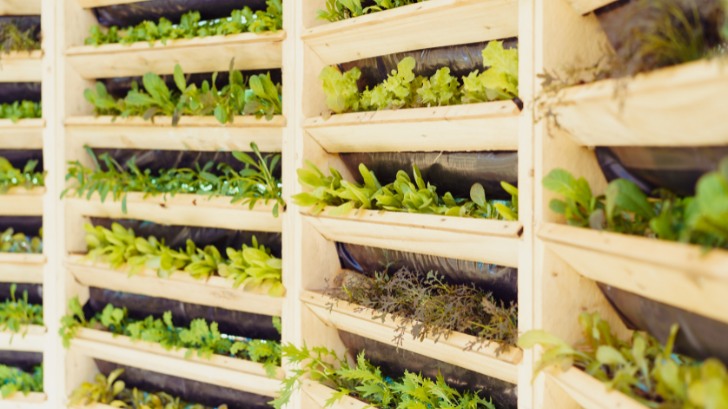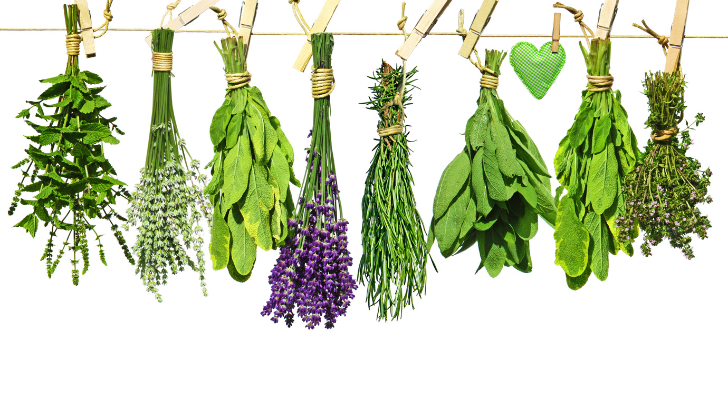

If you’ve got a green thumb and a knack for business, you might be sitting on a goldmine. That’s right, we’re talking about growing herbs for profit. This lucrative venture marries the gratification of gardening with the thrill of entrepreneurship, turning a wholesome hobby into a flourishing business.
Growing Herbs for Profit: From Seed to Sale


Growing herbs for profit is more than just planting a seed and waiting for it to grow. It requires an understanding of various stages, from the selection of herbs to the marketing of the finished product. Let’s explore each of these steps in greater detail.
Choosing Your Herbs
When it comes to growing herbs for profit, not all herbs are created equal. The kind of herbs you choose to grow can significantly impact your profit margins. It’s a bit of a balancing act – you’ll want to choose herbs that are in high demand, but also ones that grow well in your specific climate and soil conditions.
Start by researching which herbs are popular in your local market. Herbs used in cooking like basil, mint, rosemary, and oregano are often in high demand. However, don’t forget about medicinal herbs such as chamomile, echinacea, and lavender, which can also bring in a pretty penny.
Herbs To Consider Growing
- Chives are hardy, nutrient-dense, and easy to grow. They’re used in a wide range of culinary dishes and their edible flowers can add a bright splash of color to any dish,
- Oregano is a staple in Italian cooking, known for its numerous health benefits. It’s typically easy to grow from seeds, although it can take some time to reach a harvestable size,
- Parsley is a versatile herb with mass appeal. It’s used in everything from summer salads to winter stews. However, it requires constant attention to germinate from seeds, and the soil must be kept moist throughout the entire process,
- Rosemary is another popular choice, widely used for its strong fragrance and flavor. Growing rosemary from cuttings is a quick, inexpensive way to produce a large number of plants.
- Dill is a dual-purpose herb, grown for both its leaves and seeds. It grows quickly from seed and can become quite large.
- Coriander, also known as cilantro, is a key ingredient in Mexican cooking and is also used extensively in Indian cuisine. It’s an annual, so you’ll have repeat customers every year if you decide to sell.
- Lavender is a versatile herb with a multitude of uses, including cooking, herbal tea blends, and craft products. It can be sold as potted plants, seedlings, or cut flowers.
- Chamomile is easy to grow and known for its medicinal properties. It’s often used in tea, but the leaves and stems can also be eaten in salads or used in dips.
- Calendula is one of the easiest medicinal herbs to grow and can be used in tea, cosmetics, and culinary applications. The flowers and leaves can be sold fresh or dried, or used in products such as salves.
- Marsh Mallow has been used for thousands of years to treat various conditions. The leaves, flowers, and roots are all edible and can be used fresh or dried.
Cultivating Your Crop
After choosing the right herbs, it’s time to get your hands dirty. Cultivating your crop involves a variety of tasks, from preparing the soil to dealing with pests.
Start by preparing your garden. Remove any weeds and ensure the soil is well-drained. Some herbs prefer a more acidic soil, while others prefer alkaline. You might need to adjust your soil’s pH accordingly.
Next, plant your seeds or seedlings. Make sure to give each plant enough space to grow. Each herb will have different spacing requirements, so do your research beforehand.
Water your herbs as needed. Most herbs prefer soil that’s slightly dry to the touch, but not completely parched. Overwatering can lead to root rot, which can be detrimental to your plants.
Keep an eye out for pests. Common herb pests include aphids, snails, and slugs. Use organic pest control methods to keep your herbs healthy and safe for consumption.
Harvesting and Processing
The moment you’ve been waiting for – harvest time! The best time to harvest most herbs is just before they flower, when the leaves are rich in essential oils. However, this can vary depending on the specific herb, so it’s best to do a bit of research first.
After harvesting, you’ll need to process your herbs. This can involve washing, drying, and bundling your herbs. Some herbs can be sold fresh, while others are more commonly sold dried. If you’re selling your herbs fresh, ensure they’re kept cool and moist to prevent wilting.
Diving Deeper into Growing Herbs for Profit


Growing herbs for profit isn’t a set-it-and-forget-it kind of deal. It involves continuous learning, adapting, and growing (pun intended). Here, we’ll dig a little deeper into some areas that can make or break your herb business.
Understanding Your Market
Understanding your market is crucial for any business, and the herb business is no different. Start by identifying who your potential customers are. Are they home cooks who love fresh basil? Are they tea enthusiasts looking for unique herbal blends? Or maybe they’re local restaurants seeking fresh, locally sourced ingredients?
Next, look at your competition. Are there other herb growers in your area? What herbs are they growing, and how are they pricing them? You don’t need to copy what they’re doing, but understanding your competition can help you identify gaps in the market and opportunities for growth.
Finally, keep an eye on trends. The world of herbs is as fickle as any other, with different herbs going in and out of fashion. By staying ahead of the curve, you can be the first to offer the next big thing in herbs.
Perfecting Your Cultivation Techniques
Growing herbs may seem simple, but it’s a skill that takes time to master. The more you grow, the more you’ll learn about the nuances of each herb and how to get the best out of them.
For example, did you know that some herbs, like basil, prefer to be watered from below, while others, like oregano, prefer a good overhead soaking? Or that some herbs, like cilantro, can be succession planted for a continuous harvest, while others, like rosemary, are perennials that will keep growing year after year?
Take the time to learn about each herb you grow. Read books, attend workshops, join online forums, or even reach out to other herb growers. The more you know, the better your herbs will grow.
Expanding Your Product Line
Once you’ve got the basics down, it’s time to think about expansion. And no, we’re not just talking about growing more herbs. We’re talking about adding value to your herbs by transforming them into unique, value-added products.
Consider making herb-infused oils or vinegars, which can be used in cooking or salad dressings. Or how about herbal teas, made from your own dried herbs? You could even venture into the world of skincare and create herbal soaps, lotions, or salves. The possibilities are endless, and the best part is, value-added products often fetch a higher price than fresh or dried herbs alone.
Mastering the Art of Marketing
Marketing is a critical part of any successful business. It’s not enough to grow high-quality herbs; you also need to convince people to buy them.
Start with a compelling brand story. People love to know the ‘why’ behind the businesses they support. Did you start growing herbs to live more sustainably? To reconnect with nature? To promote health and wellness? Whatever your ‘why’, share it with your customers.
Next, invest in quality product photography. People eat with their eyes first, and the same goes for buying herbs. High-quality photos can make your herbs look even more enticing.
Consider using social media to reach a wider audience. Platforms like Instagram and Pinterest are perfect for showcasing your beautiful herbs and value-added products.
Finally, don’t underestimate the power of word-of-mouth marketing. Encourage your happy customers to spread the word about your business. You could even start a referral program, offering discounts to customers who refer their friends.
Keeping Your Finances in Check
Let’s face it, growing herbs for profit isn’t just about gardening; it’s also about managing a business. And a big part of that is keeping your finances in check.
Start by setting a budget for your herb business. Include all potential costs, from seeds and gardening tools to packaging and marketing expenses. Then, track your expenses meticulously. This can help you identify areas where you can cut costs and increase your profits.
It’s also important to price your herbs correctly. Pricing too high can deter customers, but pricing too low can eat into your profits. Do some market research to see what similar products are selling for, and price your herbs accordingly.
Finally, consider getting business insurance. This can protect you from potential financial losses due to unforeseen circumstances like extreme weather events or pest infestations.
Remember, growing herbs for profit is a journey, not a destination. It takes time, patience, and a whole lot of love for herbs. But with the right approach, it can be a rewarding and profitable venture.
Frequently Asked Questions
While growing herbs for profit might seem like a walk in the park, there are bound to be bumps along the road. Here are some frequently asked questions to help you navigate this venture.
- What are the most profitable herbs to grow?
Typically, specialty herbs that aren’t commonly found in grocery stores tend to fetch higher prices. These include herbs like ginseng, goldenseal, and lavender. - How much can I earn from growing herbs?
This can vary greatly depending on factors like the size of your operation, the herbs you’re growing, and your selling price. It’s not unheard of for small-scale growers to earn several thousand dollars a year. - Do I need a lot of space to grow herbs?
Not necessarily. Herbs can be grown in small spaces like a backyard or even in containers if you’re short on space. - How do I market my herbs?
There# Continue writing the article “”” are several ways to market your herbs, from selling at local farmers markets to creating a website and selling online. - What are some challenges of growing herbs for profit?
Some challenges include dealing with pests, managing weather conditions, and competing with larger commercial growers. However, with careful planning and hard work, these obstacles can be overcome. - Do I need any special licenses or permits to sell herbs?
This can vary depending on your location. It’s always a good idea to check with your local government to see what regulations apply.
Conclusion
Growing herbs for profit can be a lucrative and fulfilling venture. It allows you to tap into your passion for gardening, all while earning a profit. This guide serves as a stepping stone into the world of herb cultivation. With patience, perseverance, and a dash of business savvy, you can make your herbal dreams a reality.
And remember, every great endeavor starts with a single seed. So go ahead, plant that seed, and watch your herb business blossom.



































































